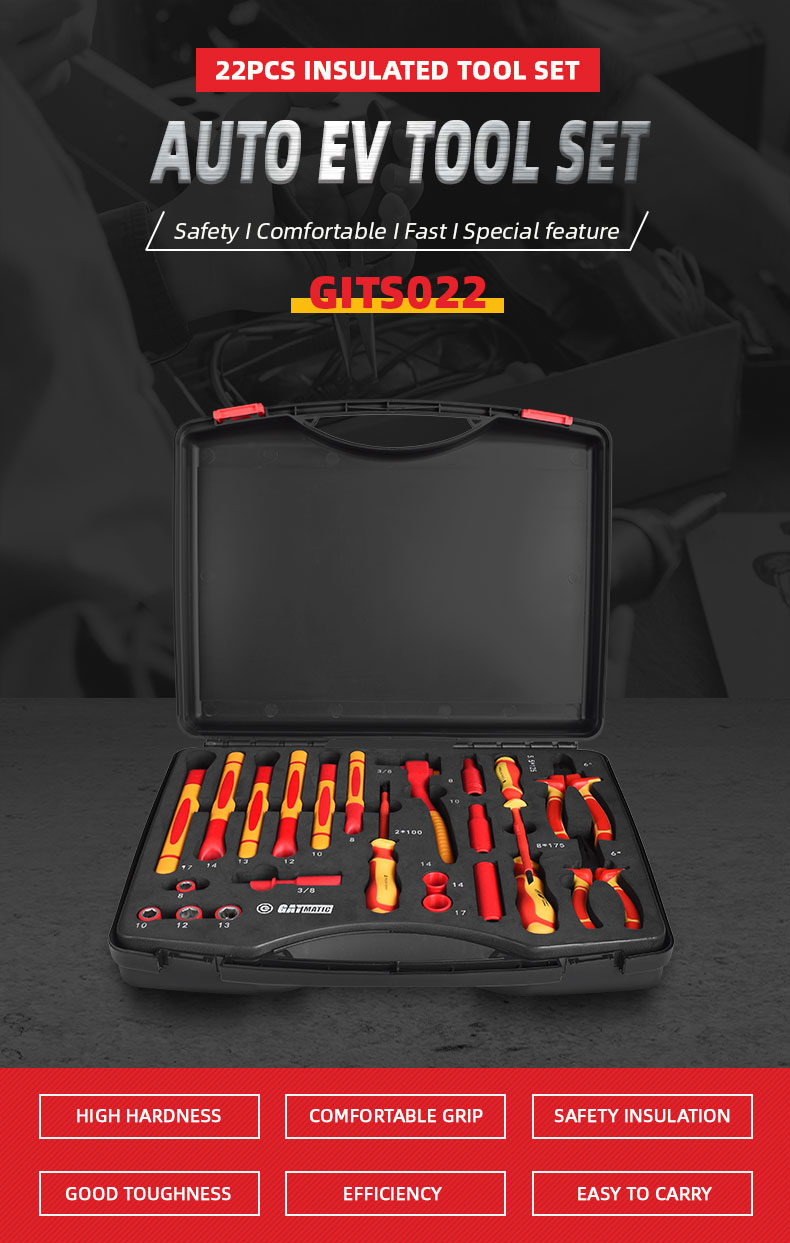What factors should be considered when selecting insulated tools for electrical work?
In the realm of electrical work, safety stands as an unyielding cornerstone. As professionals and enthusiasts alike navigate the complexities of electrical systems, the significance of insulated tools cannot be overstated. These tools serve as the frontline defense against potential hazards, mitigating the risks inherent in working with live circuits. Consequently, the selection of insulated tools demands careful consideration, encompassing various factors to ensure both safety and efficiency.
I. Factors to Consider
Insulation Material:
At the core of insulated tools lies the insulation material, typically rubber or plastic. The choice of material dictates the tool’s durability and resistance to wear and tear, directly impacting its longevity and effectiveness in shielding against electrical currents.
II. Voltage Rating
Matching the voltage rating of tools to the electrical system being worked on is paramount. Understanding the different voltage ratings and their significance aids in selecting tools capable of withstanding the specific voltage levels encountered in various applications.
III. Compliance with Standards
Adherence to relevant safety standards, such as ASTM, IEC, and ANSI, serves as a crucial benchmark for insulated tools. Certifications and markings, such as ASTM F1505 and VDE, validate the tools’ compliance, offering assurance of their safety and reliability.
IV. Ergonomics and Comfort
Beyond safety, the ergonomic design of insulated tools plays a pivotal role in user comfort and efficiency. Considerations such as handle design and weight contribute to reducing fatigue during prolonged use, enhancing overall workmanship.
V. Insulation Integrity
Regular inspection for any signs of damage or wear on the insulation is imperative. Maintaining the integrity of insulation ensures consistent protection against electrical hazards, necessitating timely replacement if compromised.
VI. Manufacturer Reputation and Quality
Trustworthy manufacturers with a proven track record of producing high-quality insulated tools instill confidence in their reliability. Researching reputable brands and leveraging user feedback aids in making informed decisions regarding tool selection.
VII. Specific Tool Considerations
Different tools, including screwdrivers, pliers, cutters, wrenches, and specialty tools, each demand specific considerations tailored to their unique functionalities. Understanding these nuances ensures the adequacy of insulation and functionality across the toolset.
VIII. Environmental Considerations
Environmental factors such as temperature, chemical exposure, and moisture levels can impact the performance of insulated tools. Choosing tools with appropriate resistance to these elements enhances their durability and reliability in diverse working conditions.
IX. Cost Considerations
While prioritizing safety is paramount, balancing quality and affordability remains a practical consideration. Evaluating the total cost of ownership, considering factors such as longevity and maintenance requirements, aids in making cost-effective decisions without compromising safety.
Conclusion
In the dynamic landscape of electrical work, the selection of insulated tools transcends mere functionality; it embodies a commitment to safety, efficiency, and professionalism. By meticulously considering factors such as insulation material, voltage rating, compliance with standards, ergonomics, insulation integrity, manufacturer reputation, environmental resilience, and cost, individuals and organizations alike can empower themselves with the tools necessary to navigate electrical systems with confidence and proficiency. In doing so, they not only safeguard against potential hazards but also uphold the highest standards of craftsmanship and responsibility in their endeavors.
FAQs
1. Why are insulated tools important in electrical work?
Insulated tools are crucial for electrical work because they provide a protective barrier against electrical currents, reducing the risk of electric shock or short circuits when working on live circuits.
2. How do I choose the right voltage rating for insulated tools?
Select insulated tools with a voltage rating that matches or exceeds the voltage of the electrical systems you’ll be working on. It’s essential to understand the different voltage ratings and their significance to ensure safety.
3. What are some common insulation materials used in insulated tools?
Common insulation materials include rubber and various types of plastics. Each material has its own durability and resistance properties, so it’s important to choose tools with insulation that can withstand the demands of electrical work.
4. How can I ensure the insulation integrity of my tools?
Regularly inspect your insulated tools for any signs of damage or wear on the insulation, such as cracks, cuts, or abrasions. Replace any tools with compromised insulation to maintain their effectiveness and safety.
5. What certifications or standards should I look for in insulated tools?
Look for certifications such as ASTM F1505 or markings indicating compliance with standards like IEC and ANSI. These certifications ensure that the tools meet rigorous safety requirements and have been tested for reliability.
6. Are there specific considerations for different types of insulated tools?
Yes, different tools, such as screwdrivers, pliers, and cutters, may have unique considerations based on their design and intended use. Understanding these nuances can help ensure the adequacy of insulation and functionality for each tool.
Describe Your Needs In Detail!
We will carefully evaluate your needs and give professional solutions.



